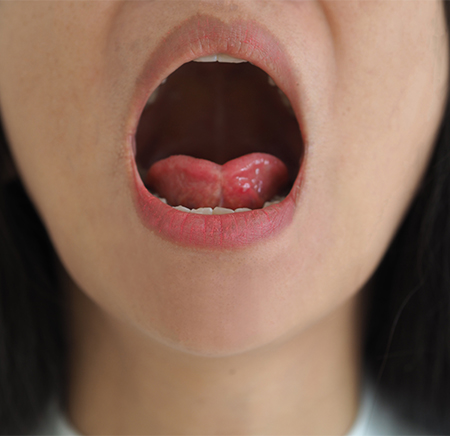 It’s a battle every time…
It’s a battle every time…
Meals… it would be so much easier if you could just skip them.
If you have a picky eater, you know the struggle:
Refusing to eat…
Throwing tantrums…
Coughing…
Choking…
Avoiding certain foods…
Sitting for long periods…
The conflicts and power struggles… it’s an emotional rollercoaster!
Something’s probably going on behind the scenes…
Diet…
Reluctance to try new things…
Sensitivity to smells and flavors…
Kids facing oral motor challenges may feel uneasy or struggle to chew specific food textures, which can result in a preference for softer or smoother foods, contributing to picky eating.
Speech…
Did you know that speech and eating are closely connected?
The mouth is a powerhouse with various jobs. If your child is a picky eater, it could be because they struggle to move food around in their mouth effectively. This same difficulty might also impact their ability to speak.
Think about it this way: if your child has difficulty moving food with their tongue, those tongue movements might impact their ability to produce specific sounds while speaking.
It’s all part of the same big picture!
 Structure…
Structure…
The way a child’s mouth is structured can impact how they eat.
For instance, if your child has a tongue tie, where the skin under the tongue is too short, it can restrict tongue movement and impact eating and speaking.
Dental issues or jaw misalignments can also make chewing uncomfortable.
Sometimes, sensory sensitivities or difficulties with oral motor skills can affect a child’s willingness to try different foods.
Function…
Picky eating not only influences food choices, but can also impact how mouths function, leading to various health issues.
Frequent mouth breathing in picky eaters may slow down chewing and contribute to digestive problems like GERD.
Messy eating habits can make mealtimes challenging and hinder the exploration of different foods.
Additionally, consistently chewing on one side of the face can lead to long-term dental and facial asymmetry issues.
You need a professional to sort all this out.
Our job is to determine what kind of picky eater your child is and why.
Your child’s picky eating MIGHT be a phase, but there might be an underlying reason for it.
No matter what’s going on, feeding therapy can help ease your concerns and frustrations.
We’ll work with your child to try new foods and develop a healthier relationship with eating.
 Here’s what we’ll do – step by step…
Here’s what we’ll do – step by step…
Step 1 – Obtain a case history…
First, we want to know all about what you and your child are going through and how it has affected your child throughout their lifetime.
Generally, picky eaters also face airway issues, sleep-disordered breathing, and speech issues so we’ll be sure to pay special attention to those areas and not overlook them.
Step 2 – Evaluate your child’s feeding…
Next, we are going to watch your child eat!
Here we are looking to see how your child moves their mouth to better understand their overall motor abilities. By looking at the overall characteristics we’ll gain a better understanding of what’s going on. For example, it is typical to see a child who cannot say a /g/ sound (a sound made in the back of our mouth) also chew in the front of their mouth.
- Is your child only eating certain foods?
- Is your child a slow eater?
- Are they messy?
- Do they drool?
- Are they frequently spitting out their food?
- Are they putting too much food in their mouth?
Picky eaters generally prefer soft, dissolvable foods that are easier to break down. A picky eater is more likely to reach for a salty cracker that can dissolve in their mouth than a tough steak that requires a lot of chewing.
Let’s ensure airway issues or low muscle tone is not slowing your child down at the table.
Your child may have difficulty controlling food using their tongue and lips. This can be due to low muscle tone or a limited range of motion.
Drooling can be a sign of difficulty closing the lips or airway challenges.
This could be your child’s last resort to protect their airway. Children often spit out food that is too difficult to handle to prevent themselves from choking.
Children generally “stuff” their mouth to help them gain better control of their food or help them feel where the food is in their mouth.
 Step 3 – Explore the sensory system…
Step 3 – Explore the sensory system…
We cannot talk about eating and food without addressing the sensory system!
That’s how we taste, smell, and feel hunger!
Just like your child can be sensitive to certain sounds, lights, or textures during the day, food sensitivities can affect their eating.
If sensory processing issues are identified in your child, we’ll integrate them into the feeding process to enhance feeding success. If needed, we’ll refer you to an occupational therapist for diagnosis and treatment of sensory processing disorders.
Collaborating with other professionals is a crucial aspect of our child’s overall healthcare team.
Step 4 – Begin treatment…
Now that we’ve identified how your child eats, the next step is to take action.
Treatment involves more than teaching your child to eat new foods; it entails understanding their motor skills, airway, and sensory systems. We’ll create a personalized plan targeting these aspects.
Throughout therapy, we’ll collaborate with you, the caregiver, to provide guidance on handling stressful situations at the table when the therapist is not present. Additionally, we’ll ensure your child practices their skills and techniques outside of therapy.
Dealing with picky eating can be challenging and intimidating. That’s why teamwork is essential to help your child achieve safe and nutritious feeding.
Let’s bring joy back to your family meals!
Mealtime is meant for nourishment and togetherness.
Let’s keep it that way.


